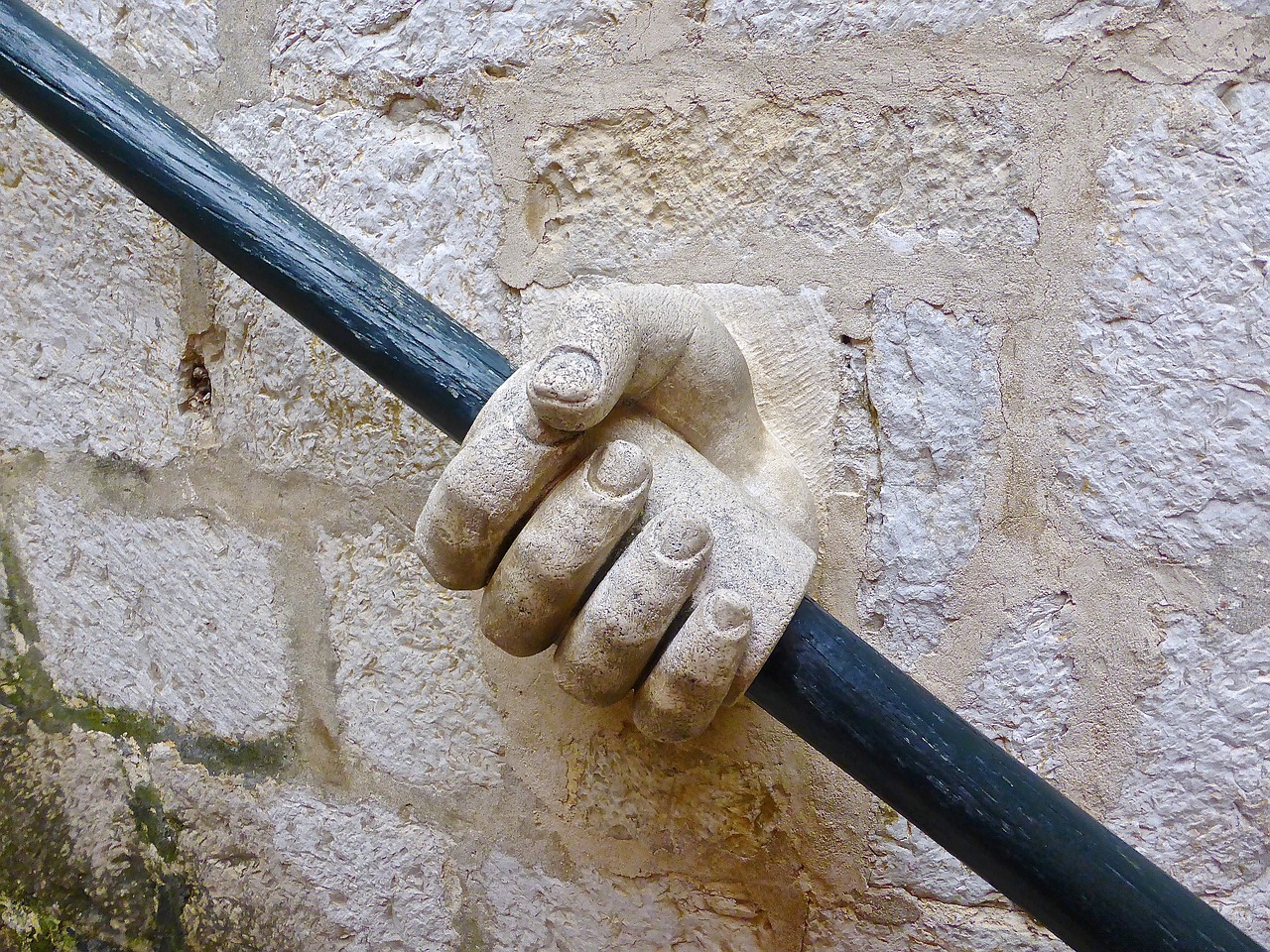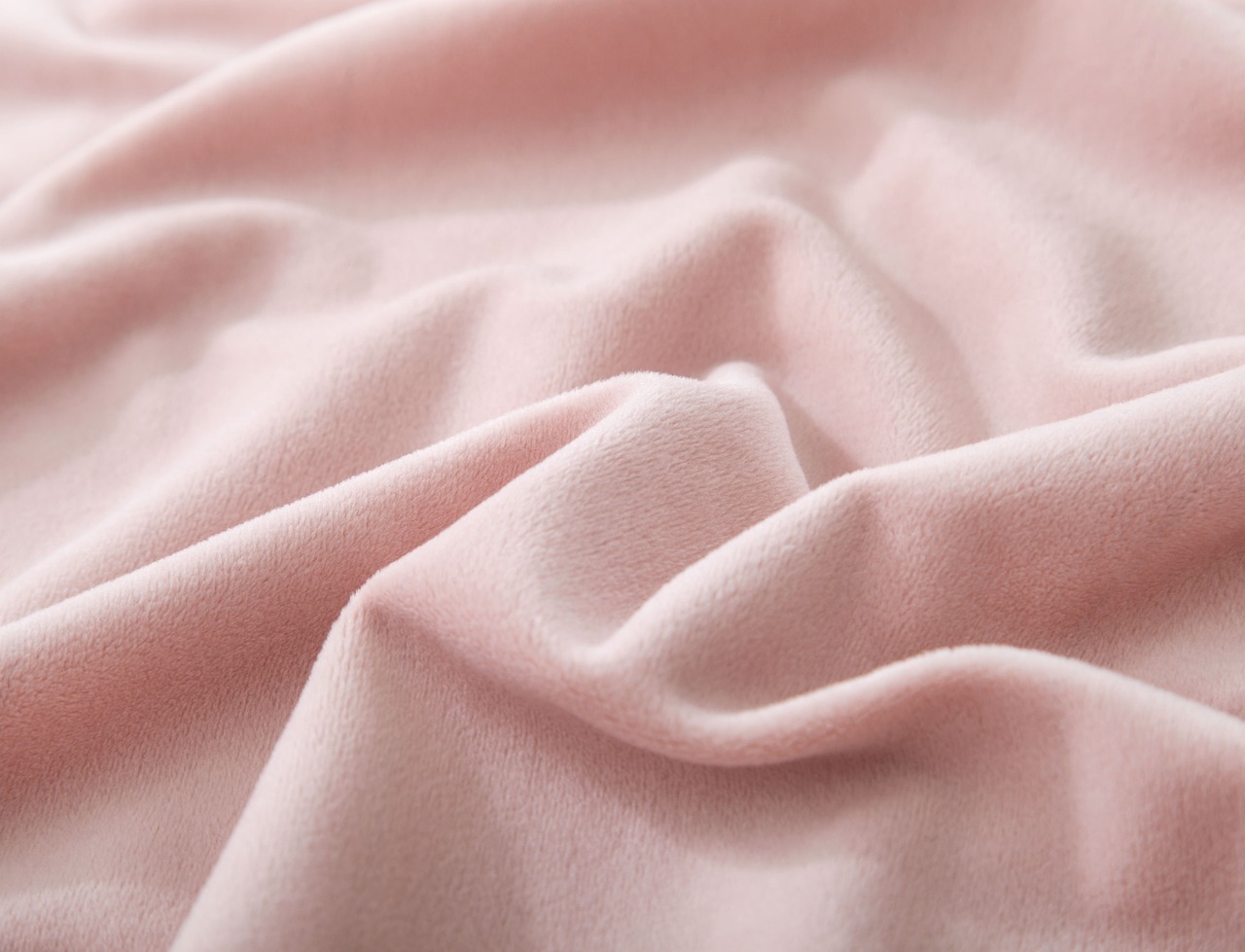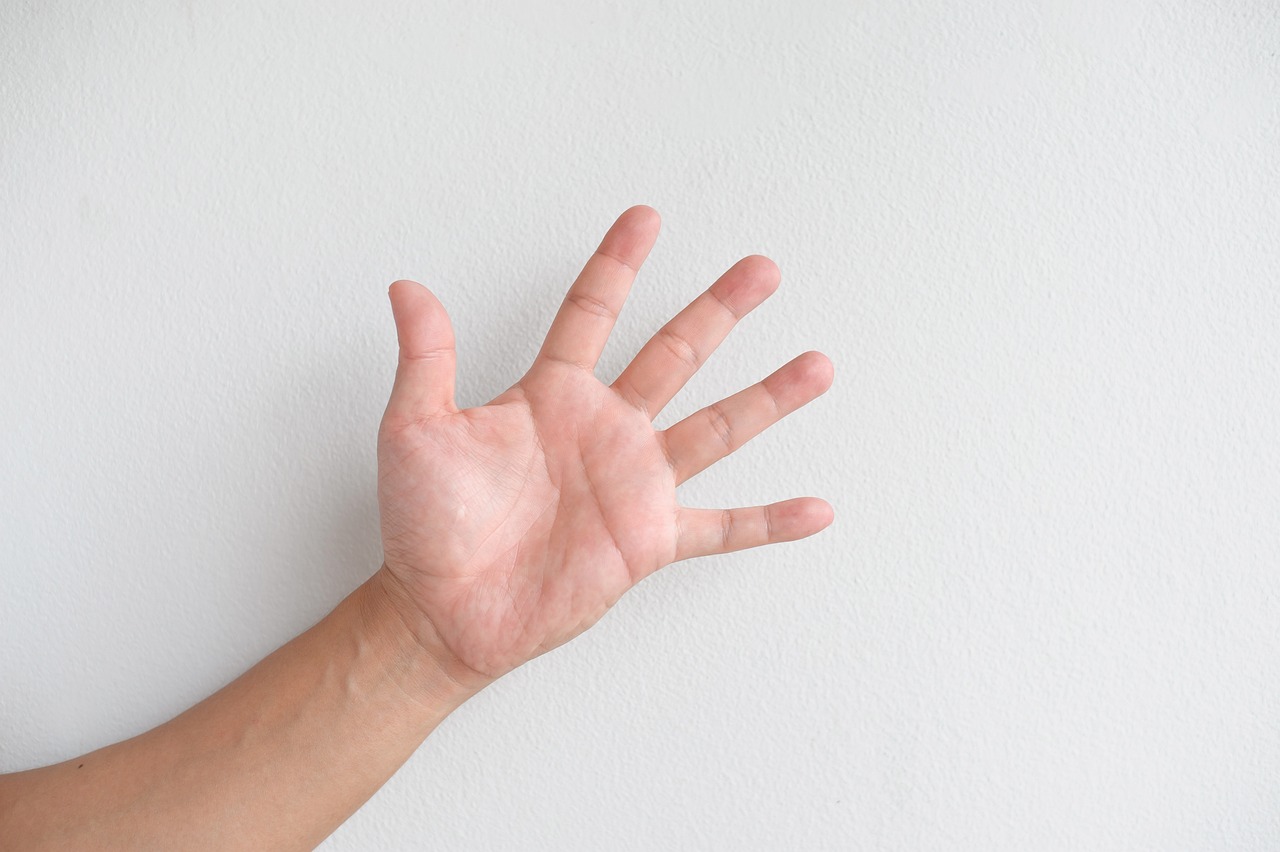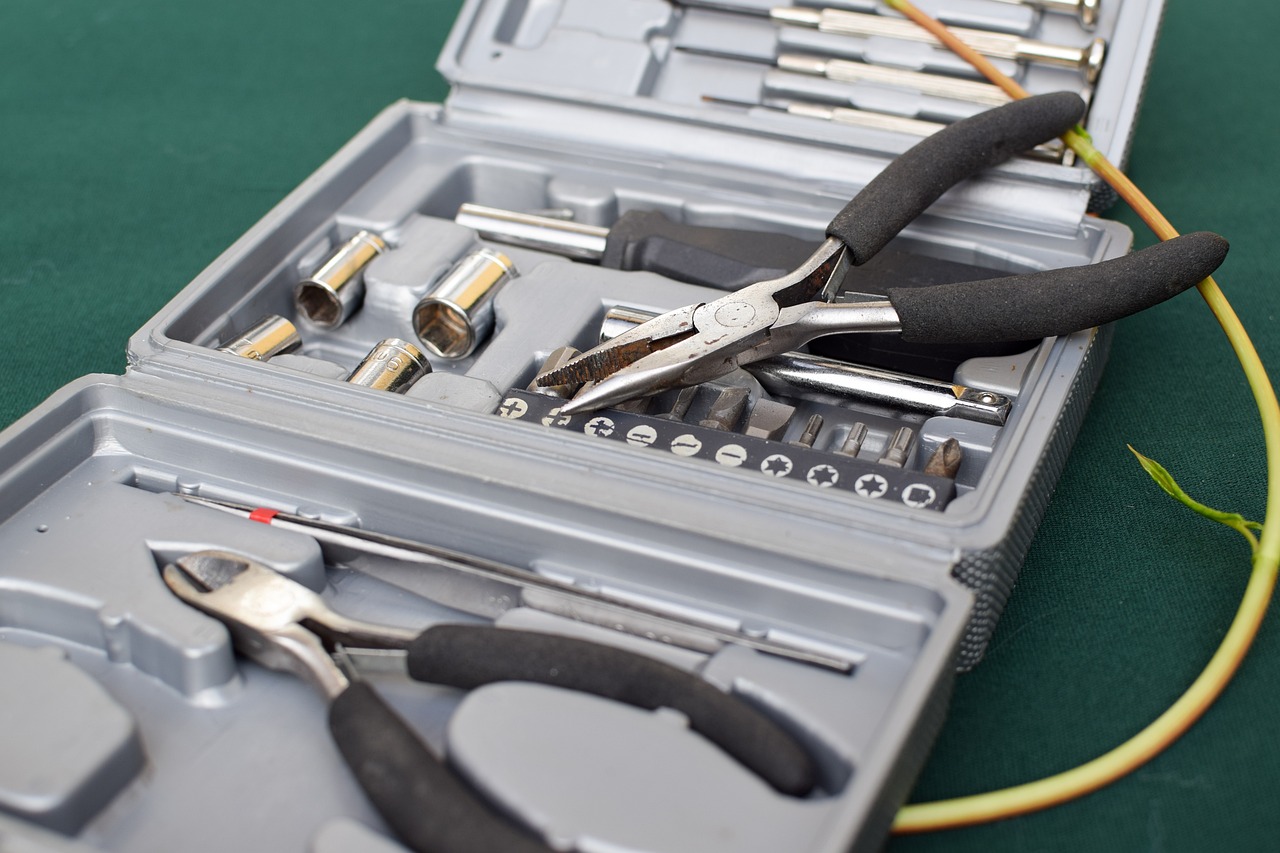Exploring the Basics of Hand Quilting
Hand quilting is not just a hobby; it's a beautiful blend of art and craftsmanship that has been passed down through generations. Imagine the satisfaction of stitching together vibrant fabrics, creating not just a quilt, but a piece of history. Hand quilting allows you to connect with this tradition, offering a unique way to express your creativity while making something truly special. Whether you’re a complete novice or someone looking to refine your skills, this article delves into the essential techniques, tools, and tips that will elevate your quilting game.
But before we dive into the nitty-gritty, let’s take a moment to appreciate the rich history behind this craft. Hand quilting has roots that stretch back centuries, originating from the necessity of warmth and comfort. Over time, it evolved into a form of artistic expression, with intricate patterns and designs that tell stories. Each stitch carries a piece of the quilter's heart and soul, making every quilt a unique testament to their journey. So, are you ready to embark on your quilting adventure?
As we explore the fundamentals of hand quilting, remember that this is more than just sewing; it’s about creating connections—with the fabric, the process, and the community of quilters around you. From understanding the essential tools to mastering basic techniques, this guide will provide you with everything you need to get started. So grab your fabric, and let’s stitch our way into this wonderful world of hand quilting!

Understanding Hand Quilting
Hand quilting is more than just a hobby; it’s a time-honored tradition that has been passed down through generations. Imagine sitting in a cozy room, surrounded by vibrant fabrics, as you stitch together layers of fabric, creating something beautiful and functional. This art form not only allows for creativity but also serves as a means of storytelling, where each quilt can hold memories, emotions, and history. The roots of hand quilting can be traced back to ancient civilizations, where it was used as a practical method to keep warm. Over the years, it has evolved into a beloved craft, cherished by many for its uniqueness and personal touch.
So, what makes hand quilting so special? Unlike machine quilting, which can often feel impersonal and rushed, hand quilting offers a meditative experience. Each stitch is a deliberate choice, allowing quilters to connect with their work on a deeper level. The rhythmic motion of needle and thread can be incredibly calming, almost like a form of therapy. Moreover, hand quilting allows for intricate designs and details that machines simply can’t replicate. It’s this attention to detail that gives hand-quilted pieces their distinct charm and character.
Throughout history, quilts have served various purposes, from practical bedding to decorative wall hangings. They have been used to commemorate significant events, celebrate cultural heritage, and even as a means of social activism. For instance, during the Great Depression, quilting bees became a way for communities to come together, sharing resources and stories while creating warmth for those in need. Today, hand quilting continues to be a vibrant community, with many quilters sharing their passion through workshops, online forums, and social media.
As you embark on your hand quilting journey, it’s essential to understand the significance of this craft. Each quilt you create is not just a collection of fabric but a tapestry of experiences and emotions. Whether you’re making a simple patchwork or an intricate design, remember that your stitches tell a story. So grab your fabric, thread, and needle, and let’s dive into the wonderful world of hand quilting!

Essential Tools for Hand Quilting
When diving into the world of hand quilting, having the right tools at your fingertips can make all the difference. Think of it as preparing for a grand adventure; you wouldn’t set out without the proper gear, right? Hand quilting is no different. It requires a selection of essential tools that not only enhance your experience but also ensure that your projects turn out beautifully. Let’s explore some of these indispensable tools that will help you stitch your way to quilting success!
First and foremost, you’ll need a good pair of quilt needles. These needles are specifically designed for hand quilting, featuring a tapered point that easily penetrates multiple layers of fabric. It’s crucial to choose the right size; generally, a size 9 or 10 needle works well for most projects. Remember, using a needle that’s too thick can result in unsightly holes in your fabric, while one that’s too thin may break under pressure.
Next up is thread. Not all threads are created equal, and selecting the right one can elevate your quilting game. Opt for high-quality cotton thread that matches your fabric. A finer thread can create delicate stitches, while a heavier thread adds texture. You might even consider using a contrasting thread to make your stitches pop, adding an artistic flair to your quilt.
Don’t forget about a reliable thimble. This small but mighty tool protects your fingers while pushing the needle through layers of fabric. There are various types of thimbles available, including metal, leather, and silicone. Experiment with a few to find the one that feels most comfortable for you. Trust me, your fingers will thank you!
Another essential tool is a rotary cutter paired with a cutting mat. These tools make cutting fabric a breeze, ensuring that your pieces are uniform and accurate. A sharp rotary cutter can slice through multiple layers of fabric with ease, while a cutting mat protects your surfaces and prolongs the life of your cutter. If you’re serious about quilting, these tools are worth their weight in gold!
To keep everything organized, consider investing in a sewing box or a dedicated quilting storage solution. Having a tidy workspace not only makes it easier to find your tools but also enhances your overall quilting experience. You’ll be amazed at how much more enjoyable your quilting sessions become when you don’t have to dig through a pile of supplies.
Finally, a quilt ruler is a must-have for precise measurements and cutting. Whether you’re squaring up blocks or measuring fabric, a clear ruler with grid lines ensures accuracy, which is key to a successful quilt. Pair it with a marking tool, such as fabric chalk or a water-soluble pen, to help you transfer patterns and guidelines onto your fabric.
In summary, the right tools can significantly impact your hand quilting journey. With a quality needle, thread, thimble, rotary cutter, sewing box, quilt ruler, and marking tool, you’ll be well-equipped to tackle any project that comes your way. So, gather your tools, and let’s get stitching!
- What is the best type of needle for hand quilting? A size 9 or 10 hand quilting needle is generally recommended for most projects.
- Can I use regular sewing thread for hand quilting? While you can, it’s best to use high-quality cotton thread specifically designed for quilting to achieve the best results.
- Do I really need a thimble? Yes! A thimble protects your fingers and makes it easier to push the needle through multiple layers of fabric.
- What’s the purpose of a quilt ruler? A quilt ruler helps you measure and cut fabric accurately, ensuring your pieces fit together perfectly.

Choosing the Right Fabric
When it comes to hand quilting, the fabric you choose can truly make or break your project. Imagine trying to paint a masterpiece on a canvas that isn’t up to par; the same principle applies here. The right fabric not only enhances the overall look of your quilt but also affects how well it holds up over time. So, let’s dive into the world of fabrics and discover how to pick the perfect one for your quilting adventure!
First and foremost, consider the type of fabric you want to work with. Cotton is the most popular choice among quilters, and for good reason! It’s durable, easy to work with, and comes in a myriad of colors and patterns. However, don’t shy away from exploring other fabric options. For instance, flannel offers a cozy texture, while batik fabrics can add a stunning visual depth to your quilt. Each fabric type has its unique characteristics that can influence your quilting experience.
Here’s a quick rundown of some common fabric types you might want to consider:
- Cotton: The go-to fabric for most quilters, known for its versatility and ease of use.
- Flannel: Soft and warm, perfect for cozy quilts.
- Batik: Offers vibrant colors and intricate patterns, adding a unique touch.
- Silk: Luxurious and beautiful, but can be tricky to work with.
Next, think about the weight of the fabric. Lighter fabrics are easier to sew but may not provide the same durability as heavier options. A good rule of thumb is to match the weight of your fabric to the intended use of your quilt. For instance, if you’re making a quilt for a child, a heavier fabric might withstand the wear and tear better than a delicate one.
Another crucial factor is the fabric’s print and color. Bold prints can make a statement, while subtle patterns can create a more classic look. Consider the overall theme of your quilt. Are you going for a modern vibe, or something more traditional? The colors you choose can evoke different emotions, so think about what message you want your quilt to convey. You might want to create a color palette that harmonizes well, ensuring that the hues complement each other beautifully.
Lastly, always pre-wash your fabric before starting your quilting project. This step helps to prevent any surprises later on, such as fabric shrinkage or color bleeding. It’s like preparing your canvas before you start painting; it sets the stage for a successful creation!
In summary, choosing the right fabric involves considering the type, weight, print, color, and pre-washing. By taking the time to select the fabric that aligns with your vision, you’ll set yourself up for quilting success. So, go ahead and explore those fabric aisles—your perfect quilt is just waiting to be made!
Q: What is the best fabric for beginners?
A: Cotton is highly recommended for beginners due to its ease of use and availability.
Q: Can I mix different fabric types in one quilt?
A: Yes, but be mindful of the fabric weights and how they will behave together.
Q: How do I prevent my fabric from fraying?
A: Using a zigzag stitch or a serger on the edges can help prevent fraying.
Q: Should I always pre-wash my fabric?
A: It's a good practice to pre-wash to avoid shrinkage and color bleeding.

Basic Hand Quilting Techniques
Hand quilting is an art that combines creativity and skill, and mastering the basic techniques is fundamental to creating beautiful quilts. Whether you're a novice or looking to refine your skills, understanding these techniques will set you on the right path. The most common stitches used in hand quilting are the running stitch and the backstitch. Each of these stitches has its own unique application and can dramatically affect the overall look of your quilt.
The running stitch is perhaps the simplest and most widely used stitch in hand quilting. To execute this stitch, you simply pass the needle in and out of the fabric in a continuous line. This technique is perfect for beginners, as it allows for quick and easy stitching. Additionally, it can be used not only for quilting but also for embellishing your fabric. Imagine it as the basic building block of your quilting toolbox—once you master it, you can create beautiful patterns and designs!
On the other hand, the backstitch offers a stronger, more durable seam. To perform this stitch, you insert the needle into the fabric, pull it through, and then insert it back into the fabric a short distance behind the last stitch. This technique is ideal for areas that require extra strength, such as quilt borders or intricate designs where durability is essential. Think of it as the sturdy backbone of your quilt—reliable and robust.
Before diving into stitching, it's crucial to prepare your quilt sandwich properly. This involves layering your backing, batting, and top fabric correctly. Start with the backing fabric, which should be larger than your quilt top. Place it right side down on a flat surface. Next, lay the batting on top, ensuring it is also larger than the quilt top. Finally, place your quilt top right side up on top of the batting. Smooth out any wrinkles, and pin the layers together to prevent shifting during quilting. This preparation is like setting the stage for a performance—everything must be in place for the show to go on smoothly!
In addition to the running stitch and backstitch, there are several other hand quilting stitches that can add flair and texture to your projects. Some of these include:
- Whip Stitch: Often used for binding edges, this stitch is quick and effective.
- Slip Stitch: Great for invisible hems, this stitch is perfect for finishing edges without visible stitching.
- Cross Stitch: Adds a decorative element, perfect for creating patterns and designs.
Each of these stitches brings its own personality to your quilt. Experimenting with different stitches can lead to delightful surprises in your finished project, making it uniquely yours.
As you practice these techniques, remember that hand quilting is not just about the final product; it’s also about the journey. So, don’t be afraid to make mistakes—each stitch you take is a step towards improving your craft. With patience and practice, you’ll find your rhythm and develop your own style, turning a simple quilt into a cherished piece of art.
Q: How long does it take to hand quilt a quilt?
A: The time it takes to hand quilt a quilt can vary greatly depending on the size of the quilt and your skill level. A small quilt may take a few days, while a larger project could take weeks or even months.
Q: What type of thread should I use for hand quilting?
A: It's best to use a high-quality cotton thread that matches your fabric. Cotton thread is durable and provides a beautiful finish.
Q: Can I use a sewing machine for quilting?
A: Absolutely! Many quilters use a sewing machine for piecing and quilting. However, hand quilting adds a personal touch and is often preferred for its traditional appeal.

Preparing Your Quilt Sandwich
Before you dive into the delightful world of hand quilting, one of the most crucial steps is preparing your quilt sandwich. Now, you might be wondering, what exactly is a quilt sandwich? Think of it as a delicious layered cake, where each layer plays a vital role in the final outcome. In quilting, your sandwich consists of three main components: the backing fabric, the batting, and the top fabric. Each layer contributes to the overall texture, warmth, and appearance of your quilt.
To create your quilt sandwich, start with the backing fabric. This is the layer that will be on the back of your quilt, so choose a fabric that complements your design. It’s wise to use a fabric that is durable yet soft, as it will provide a cozy feel against your skin. Next, lay your batting on top of the backing. Batting is the middle layer that provides warmth and loft to your quilt. You can find batting made from various materials, including cotton, polyester, or a blend of both. Each type has its unique characteristics; for instance, cotton batting tends to be breathable, while polyester offers a bit more loft and resilience.
Finally, place your top fabric on the very top of the sandwich. This is where your creativity shines! Whether it’s a beautiful floral print or a solid color, this layer will be the face of your quilt. Make sure to cut all your fabrics to the same size, allowing for a slight overhang beyond the batting to ensure that everything is well-covered during the quilting process.
Once you have your layers arranged, it’s time to secure them together. You can use safety pins, basting spray, or even long stitches to hold everything in place. This is a crucial step because it prevents any shifting while you quilt, which can lead to uneven stitches and a less polished final product. A common method is to create a grid pattern with your safety pins, spacing them about 6 to 8 inches apart. This will keep your layers firmly together and make the quilting process much smoother.
Now, you might be wondering how to ensure that your quilt sandwich is perfectly prepared. Here are a few tips:
- Press your fabrics: Always iron your fabrics before assembling your quilt sandwich. This removes any wrinkles and ensures a flat surface for quilting.
- Trim excess fabric: After cutting your fabrics, trim any excess to avoid bulkiness at the edges.
- Check for fabric alignment: Ensure that all layers are aligned properly before securing them. Misalignment can lead to frustration later on.
In summary, preparing your quilt sandwich is an essential step that sets the foundation for your hand quilting journey. By carefully selecting your fabrics and securing your layers, you pave the way for a beautiful and cohesive quilt. So, roll up your sleeves, gather your materials, and get ready to create something wonderful!
Q1: What is the best type of batting to use for hand quilting?
A1: The best type of batting depends on your project. Cotton batting is great for breathability, while polyester offers more loft. A cotton-poly blend can also be a good compromise.
Q2: How do I prevent my quilt layers from shifting?
A2: Use safety pins or basting stitches to secure the layers together before you start quilting. This will help keep everything in place.
Q3: Can I use any fabric for the backing?
A3: While you can use various fabrics, it's best to choose something durable and soft. Avoid fabrics that might fray easily or are too sheer.

Common Hand Quilting Stitches
When it comes to hand quilting, the stitches you choose can significantly affect the overall look and feel of your project. Each stitch has its own personality, and understanding these common hand quilting stitches is essential for both aesthetic appeal and structural integrity. Let's dive into some of the most popular stitches that every quilter should know!
The running stitch is perhaps the most fundamental stitch in hand quilting. It’s simple yet effective, making it a favorite among beginners. To create a running stitch, simply push your needle through the fabric, pulling it out a short distance away, and then back in again. This creates a series of small, evenly spaced stitches. The beauty of the running stitch lies in its versatility; it can be used for both functional seams and decorative elements.
Another staple is the backstitch, which is known for its strength and durability. This stitch is particularly useful for outlining shapes or adding detail to your quilt. To execute a backstitch, you start by making a small stitch, then go back to the end of that stitch and move forward a short distance to create the next one. This method results in a continuous line of stitching that’s both sturdy and visually appealing.
For those looking to add a touch of elegance, the whip stitch is a fantastic choice. It’s often used for attaching binding or finishing the edges of a quilt. The whip stitch involves taking small stitches along the edge of the fabric, catching just a bit of the quilt top to secure it in place. This stitch is discreet yet effective, allowing you to finish your quilt with a polished look.
Additionally, the cross-stitch can be a delightful way to add texture and visual interest. This stitch involves creating an 'X' shape on the fabric, which can be used in various patterns. It’s perfect for embellishing specific areas of your quilt and can be combined with other stitches for a unique effect.
As you explore these stitches, you’ll find that each serves a distinct purpose and can be adapted to fit your design. Here’s a quick overview of the common hand quilting stitches:
| Stitch Name | Purpose | Technique |
|---|---|---|
| Running Stitch | Basic stitching, decorative seams | Continuous small stitches |
| Backstitch | Strong seams, outlining | Stitching back to the previous stitch |
| Whip Stitch | Attaching binding, finishing edges | Small stitches along the edge |
| Cross-Stitch | Adding texture, embellishment | Creating 'X' shapes on fabric |
Remember, mastering these stitches takes practice. Don’t be afraid to experiment with them on scrap fabric before diving into your main project. With time, you’ll develop a rhythm and style that reflects your personality as a quilter. So grab your needle and thread, and let your creativity flow!
Q: What is the best stitch for beginners?
A: The running stitch is often recommended for beginners due to its simplicity and versatility.
Q: How do I keep my stitches even?
A: Practice is key! Start with small sections and focus on maintaining consistent spacing between stitches.
Q: Can I use any type of thread for hand quilting?
A: While you can use various threads, cotton thread is typically preferred for its strength and ease of use.

Tips for Successful Hand Quilting
Hand quilting can be a rewarding and fulfilling craft, but it does require a bit of finesse and patience. To really elevate your quilting game, there are some essential tips that can help you achieve a polished, professional look. First and foremost, practice makes perfect. The more you quilt, the more comfortable you’ll become with the techniques and tools. Don’t be afraid to experiment with different stitches and patterns; it’s all part of the learning process!
Another important tip is to take your time. Hand quilting is not a race; it’s about enjoying the journey. Rushing through your stitches can lead to uneven lines and mistakes that might frustrate you later on. Instead, find a comfortable pace that allows you to focus on your technique. If you find yourself getting tired or frustrated, take a break. Sometimes stepping away for a moment can provide clarity and inspiration.
When it comes to thread choice, opt for high-quality threads that suit your fabric type. Cotton threads are popular for their strength and durability, but don’t shy away from experimenting with polyester or silk threads for different effects. Always remember to match your thread color to your fabric, or choose a contrasting color if you want your stitches to stand out. This can add a beautiful texture and visual interest to your quilt.
Lighting is another crucial factor in successful hand quilting. Make sure you’re working in a well-lit area, or consider investing in a good lamp that mimics natural light. This will help you see your stitches clearly and reduce eye strain. Additionally, a comfortable chair and a supportive cushion can make those long quilting sessions much more enjoyable.
One technique that can greatly improve your hand quilting is to keep your stitches even. This may take some practice, but try to maintain a consistent distance between each stitch. If you find that your stitches are becoming too tight or loose, adjust your grip on the needle or the tension of the thread. A good rule of thumb is to aim for stitches that are about ¼ inch apart, but feel free to adjust based on your design.
Lastly, don't forget to maintain a positive mindset. Quilting should be fun and creative, so don’t be too hard on yourself if things don’t turn out perfectly. Every quilt tells a story, and imperfections often add character to your work. Embrace the process, celebrate your progress, and share your creations with others. You might be surprised at how much joy your quilts can bring to those around you!
As you dive deeper into hand quilting, remember that community is key. Joining quilting groups, either online or in-person, can provide support, inspiration, and valuable tips from fellow quilters. Sharing your work and learning from others can enhance your skills and keep your passion alive.
Q: How long does it take to complete a hand quilt?
A: The time it takes to complete a hand quilt can vary greatly depending on the size, complexity of the design, and your skill level. A small quilt may take a few days, while larger projects can take several weeks or even months.
Q: What is the best fabric for hand quilting?
A: Cotton is generally the most preferred fabric for hand quilting due to its durability and ease of handling. However, you can also experiment with blends or other materials depending on your project.
Q: Can I hand quilt without a sewing machine?
A: Absolutely! Hand quilting is a traditional method that doesn’t require a sewing machine. In fact, many quilters find hand quilting to be a more personal and satisfying experience.
Q: How do I fix mistakes in my hand quilting?
A: If you notice a mistake, don’t panic! You can often remove stitches using a seam ripper and redo them. Alternatively, you can incorporate the mistake into your design, turning it into a unique feature of your quilt.

Maintaining Your Quilting Tools
When it comes to hand quilting, maintaining your tools is just as important as mastering the techniques. After all, your needles, threads, and thimbles are your best friends in this creative journey. Imagine trying to bake a cake with a rusty whisk; it just wouldn't work out, right? Similarly, using poorly maintained tools can lead to frustration and subpar results in your quilting projects.
To keep your quilting tools in top-notch condition, start with regular cleaning. For instance, after each quilting session, take a moment to wipe down your tools with a soft cloth. This simple act can prevent dirt and grime from building up. If you notice your needles becoming dull, it might be time to replace them. Dull needles can snag your fabric and ruin the beautiful work you've done. Trust me, it’s worth investing in quality needles that will last longer and perform better.
Another aspect of maintenance is proper storage. Think of your tools as precious gems; they deserve a safe place to rest. Store your needles in a dedicated needle case to prevent them from getting lost or damaged. Organizing your threads in a clear container not only keeps them untangled but also makes it easier to find the right color when you need it. If you have a thimble, make sure to keep it in a designated spot to avoid misplacing it. A cluttered workspace can lead to a cluttered mind, and we want to keep our creativity flowing smoothly!
Furthermore, consider the environment where you keep your quilting tools. Avoid storing them in damp or overly humid areas, as moisture can lead to rusting and deterioration. A dry, cool place is ideal. If you notice any signs of rust on your tools, gently clean them with a fine steel wool pad or a rust remover specifically designed for metal. Always follow up with a light coat of oil to protect the surface from future damage.
Lastly, don’t forget to periodically check your tools for any wear and tear. If you notice a thread cutter that’s not cutting as smoothly as it used to, or a thimble that’s become too loose, it’s time to replace them. Keeping your tools in excellent shape not only enhances your quilting experience but also ensures that your projects turn out beautifully. Remember, a little maintenance goes a long way in preserving the joy of quilting!
- How often should I clean my quilting tools? It's a good habit to clean your tools after each quilting session to prevent dirt buildup.
- What is the best way to store my quilting needles? Store them in a dedicated needle case to keep them safe and organized.
- Can I use regular oil on my quilting tools? It's best to use oil specifically designed for sewing tools to avoid any damage.
- How do I know when to replace my needles? If needles start snagging fabric or feel dull, it's time for a replacement.

Resources for Further Learning
If you're eager to dive deeper into the world of hand quilting, you're in luck! There are countless resources that can help you expand your skills and knowledge. Whether you're a beginner or a seasoned quilter, these materials will guide you through various techniques, patterns, and the rich history of this beautiful craft. From books to online communities, the options are endless. Imagine having a treasure chest filled with all the tools you need to enhance your quilting journey!
One of the best ways to start is by exploring books dedicated to hand quilting. These books often contain detailed instructions, beautiful illustrations, and even personal anecdotes from experienced quilters. Here are some recommended titles:
| Title | Author | Focus Area |
|---|---|---|
| The Art of Hand Quilting | Ruth McDowell | Techniques and Patterns |
| Quilting with a Modern Slant | Rachel May | Modern Techniques |
| Quilt As-You-Go Made Modern | Jera Brandvig | Innovative Methods |
In addition to books, online platforms have become a goldmine for quilters. Websites like Craftsy and Craft Gossip offer a variety of tutorials and classes that cater to all skill levels. You can watch videos, join forums, and even connect with other quilting enthusiasts. Just think of it as being part of a global quilting family where you can share your progress, ask questions, and receive feedback!
Social media is another fantastic resource. Platforms like Instagram and Pinterest are overflowing with inspiration. You can follow popular quilters, explore hashtags like #HandQuilting, and save your favorite patterns and projects. It’s a visual feast that can spark your creativity and motivate you to try new techniques.
Lastly, if you prefer a more structured approach, consider enrolling in online courses. Websites such as Udemy and Skillshare offer classes on hand quilting that range from beginner to advanced levels. These courses often include step-by-step instructions, making it easier to follow along at your own pace. Plus, you can revisit the lessons whenever you need a refresher!
With these resources at your fingertips, you'll find that the world of hand quilting is not only accessible but also incredibly rewarding. Whether you prefer the tactile experience of flipping through a book, the interactive nature of online classes, or the community aspect of social media, there’s something for everyone. So, grab your fabric and thread, and let your quilting journey unfold!
As you embark on your hand quilting adventure, you might have a few questions. Here are some common queries that many beginners and enthusiasts have:
- What is the best fabric for hand quilting? Cotton fabric is highly recommended for beginners due to its durability and ease of handling.
- How do I prevent my stitches from being uneven? Practice is key! Start slowly, and focus on maintaining consistent tension while stitching.
- Can I hand quilt on a sewing machine? While hand quilting is traditionally done by hand, you can use a sewing machine for quilting if you prefer that method.
Remember, the more you learn and practice, the better you will become. Happy quilting!
Frequently Asked Questions
- What is hand quilting?
Hand quilting is a traditional method of sewing layers of fabric together by hand using a needle and thread. It not only adds durability to the quilt but also creates beautiful patterns and textures, making each piece unique.
- What tools do I need to start hand quilting?
To begin your hand quilting journey, you'll need a few essential tools. These include quilting needles, high-quality thread, a thimble for protecting your fingers, and a pair of sharp scissors. Having a quilting hoop or frame can also help keep your fabric taut while you work.
- How do I choose the right fabric for quilting?
Selecting the right fabric is crucial for a successful quilting experience. Look for 100% cotton fabric, as it is durable and easy to work with. Consider the weight and texture of the fabric, as well as the colors and patterns that will complement your design.
- What are some basic hand quilting techniques?
Some fundamental techniques include the running stitch, which is great for simple patterns, and the backstitch, which provides a stronger seam. Practicing these stitches will help you gain confidence and improve your skills as you progress.
- How do I prepare my quilt sandwich?
Preparing your quilt sandwich involves layering your backing fabric, batting, and top fabric in that order. Make sure to smooth out any wrinkles and pin or baste the layers together to keep them secure while you quilt.
- What tips can help improve my hand quilting?
Practice is key! Start with small projects to build your skills. Keep your stitches even and consistent, and don’t hesitate to take breaks to avoid fatigue. Additionally, using a good quality thread can make a significant difference in your final results.
- How should I maintain my quilting tools?
To keep your quilting tools in top condition, regularly clean your needles and scissors to prevent rust and ensure sharpness. Store your tools in a dry place, and consider using a protective case for your needles and threads to keep them organized and safe.
- Where can I find resources for further learning?
There are plenty of resources available! Look for quilting books, online tutorials, and websites dedicated to quilting. Joining local quilting groups or online communities can also provide valuable support and inspiration as you learn.



















